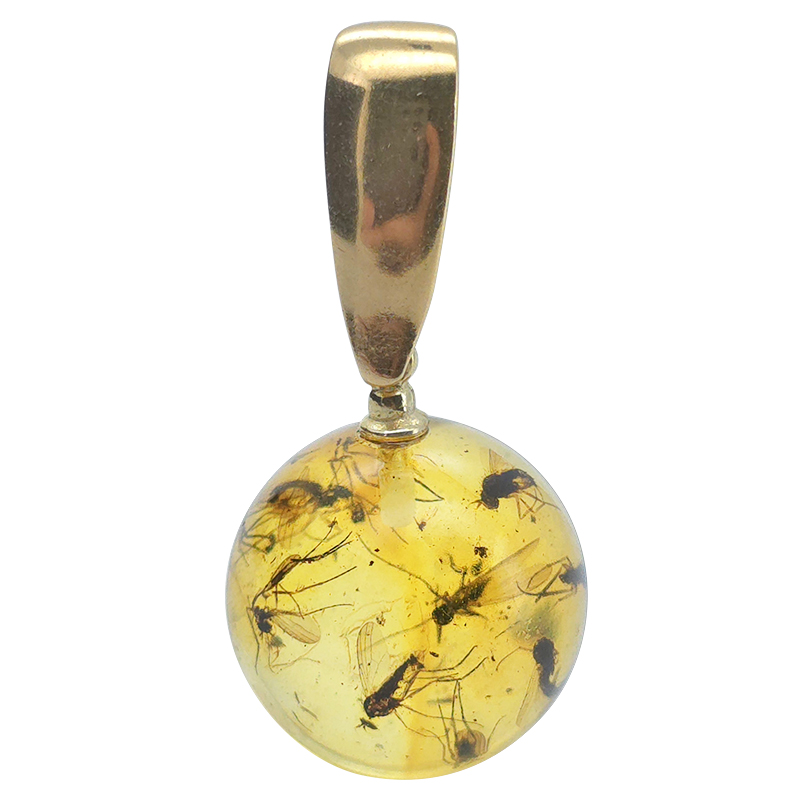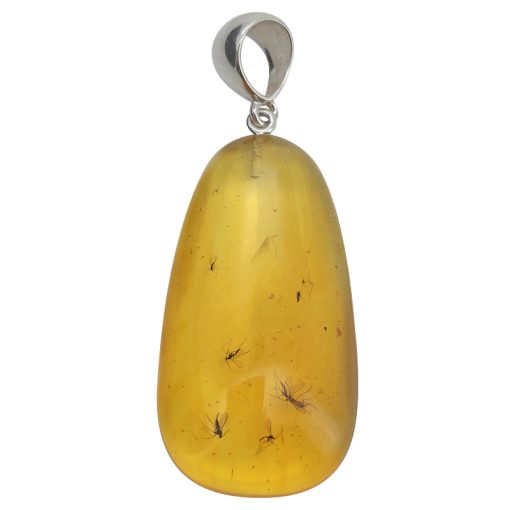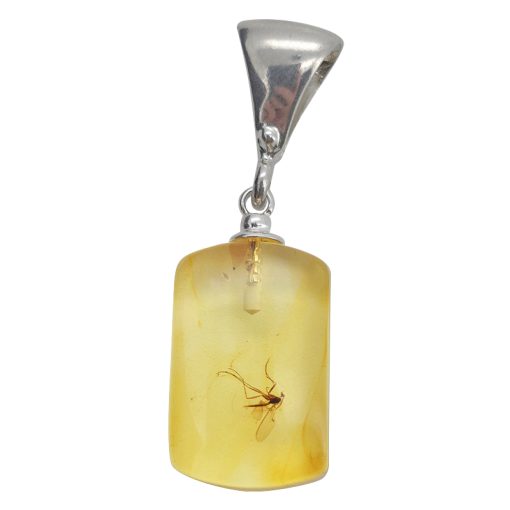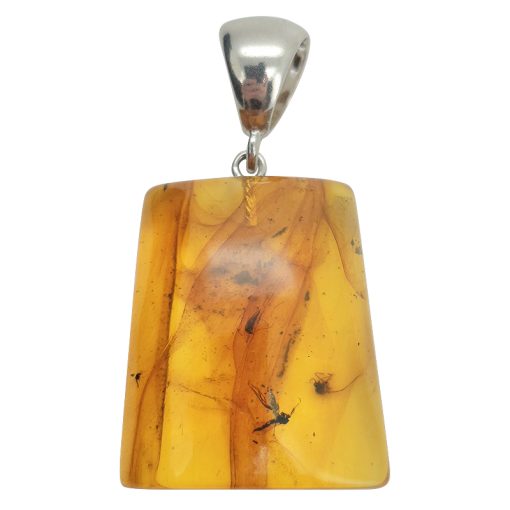Science
Coolest Specimens Preserved in Amber (According to Me)
Hey There, Amber Enthusiasts!
As you might’ve guessed, we are what you could call “big fans” of amber. While we are typically more concerned with the fashion side of things, it’s important to recognize just how interesting the material itself is! (For more general information about how amber is formed and classified, click here to visit our Amber Education page.) Each piece of amber is millions of years old, completely unique, and comes with its own individual quirks known as inclusions. Sometimes, those inclusions are well preserved insects and animals. That means you could be carrying around a long extinct species, perhaps one that hasn’t even been classified yet! To celebrate that fact, I wanted to share with you some of the coolest ancient discoveries found in amber. Enjoy!
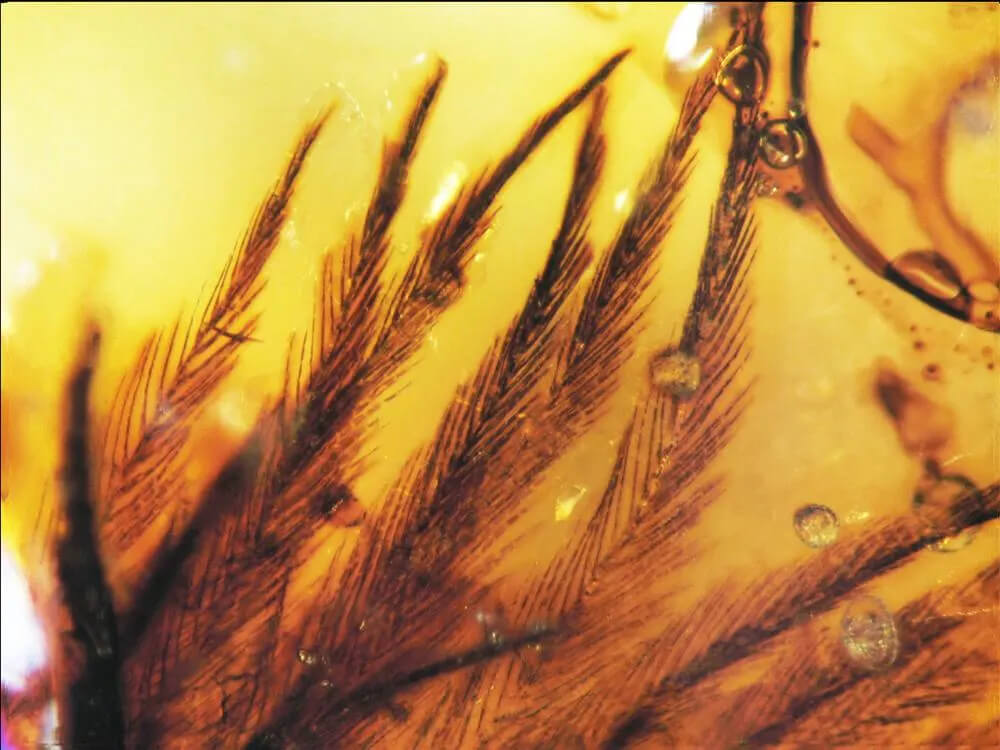
Preserved dinosaur feathers
(Img credit: Science/AAAS)
1. Dinosaur Feathers!
You might’ve heard that many species of dinosaur we previously thought to be scaly may have actually been covered in many feathers. Well, they aren’t exactly “feathers” the way we know them on birds today, but primitive precursors to the protective feathers on modern birds. (Relax, Jurassic Park fans. The adult T-Rex you know and love may still have been mostly scaled!) These pieces of amber, discovered in Canada and believed to be from the late Cretaceous period, show some of these primitive proto-feathers in incredibly preserved condition! This is an incredibly lucky find, and we likely wouldn’t be able to find this kind of keratin-based biodegradable evidence without amber.
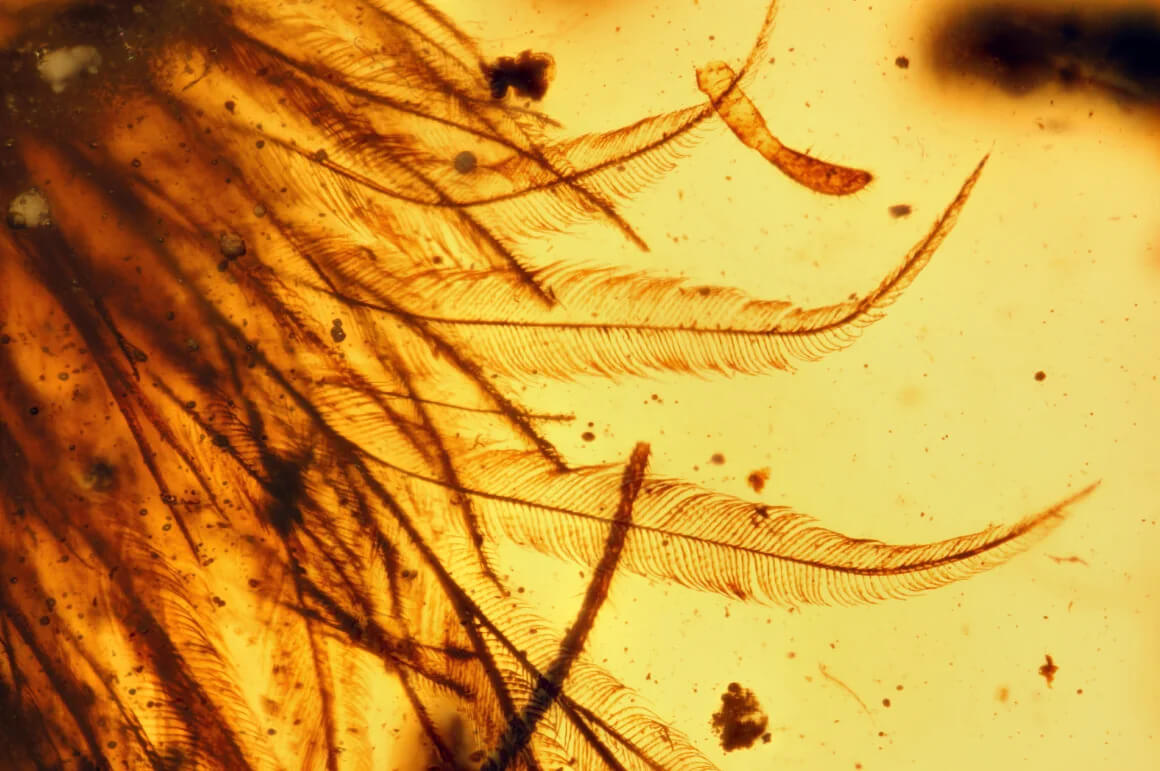
More preserved dinosaur feathers!
(Img credit: Royal Sasketchewan Museum (RSM/R.C McKellar)
2. Preserved Bits of Antarctica’s Rainforest!
Before it became the…well, to put it bluntly, frozen hellscape it is today, Antarctica was home to a lush rainforest! About 90 million years ago, it was covered in environments not too unlike the ones we see in New Zealand today. This actually isn’t THAT surprising, considering how close the continents of Antarctica and Australia were back in the Cretaceous. That being said, it’s insanely weird to think about the (in my opinion) cursed ice desert of today being home to the kind of stuff you’d see in the place they filmed Lord of the Rings.
While this theory has been present for several years now, scientists found the first ever piece of Antarctic amber in 2017. Before then, it was the only continent on Earth that had no known amber deposits! This amber and mudstone discovery contained preserved coniferous tree bark, which may not sound very exciting but trust me, it’s cool! This tiny (~0.002 inch) piece of amber contains microscopic clues about the elusive past of the big, wet, cold, snowy ice brick we know and tolerate. Amazing!
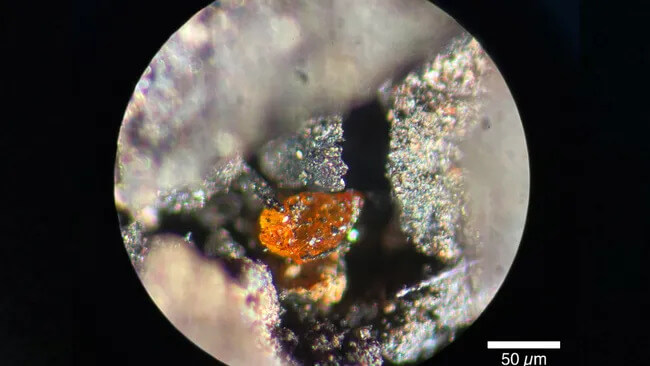
Antarctica’s first ever discovered piece of amber!
(Img credit: Alfred-Wegener-Institut / V.Schumacher)
3. Insanely Well Preserved Gecko!
Millions of years before they sold car insurance, geckos did other things. Like…walking around. Eating bugs. Making interesting little croaky reptile noises. Doing that weird frog thing with their throat where it bulges out when it’s breathing. (I’m not a gecko expert, okay?) Anyways, this extremely well preserved gecko fossil was found in the Eocene Prussian Formation in Russia, and includes the head, upper body, and scaly little arms. Just look at that thing and tell me it’s not cool, you can’t! Unfortunately, his buddies are super dead, and these are the only known remains of his particular species. We may never be able to definitively assume this guy’s place in the gecko family fossil record, but he sure is handsome!
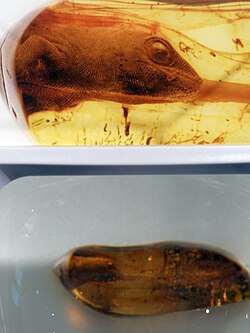
Well preserved Yantarogekko balticus!
(Img credit: Museumsfotograf, Wikipedia)
4. Ancient Diseases! (Yay!)
There have been a few bugs preserved in amber that were carrying really nasty, really old diseases. Bacteria itself likely arose on the planet around 3.6 billion years ago, and rarely survives in the fossil record, so finding species preserved in amber is huge! A 15 million year old tick ancestor found in Myanmar and preserved in amber was found to be carrying Borrelia, or ancient Lyme bacterium. For reference, humans as we know them (homo sapiens) are about 300-400 thousand years old, and the earliest members of the Homo genus that we know of (homo habilis) only came to be around 2.8 million years ago. That would mean Lyme Disease, or at least the precursors to it, have been around FAR longer than any humans have! We only formally recognized Lyme disease in the 1970s, which to be honest, is something I’m not a big fan of knowing.
It’s also not comforting that the iceman, a 5,300 year old ice mummy discovered in the Eastern Alps, also was found with the genetic material for Borrelia. According to researchers, the poor guy was “probably already in misery from Lyme disease.” It gets worse too, because scientists at Oregon State University also found a 20 million year old flea in Dominican amber that was carrying an ancient form of the Bubonic plague! Some friendly advice, if you happen to travel millions of years into the past, bring the bug spray. Bring the whole bug-repellent aisle, actually…and maybe a priest. Also, stay away from me if/when you get back.
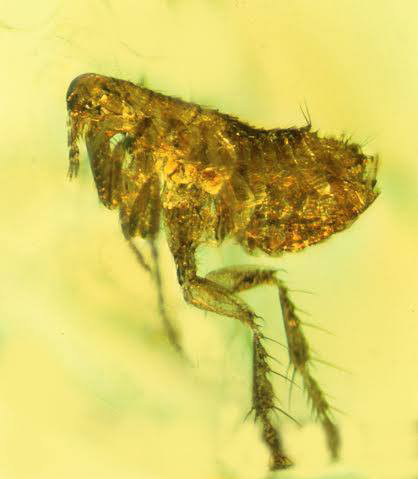
Plague bacterium infested flea
(Img credit: Dr. George Poinar Jr.)
There are a ton of cool scientific discoveries about the ancient world to be made from amber. We are constantly finding new extinct species, evidence of biomes’ past, and much more. The next time you buy or wear your favorite amber jewelry, let it be a reminder of just how incredible it is that we get to wear history!
Stay tuned for the next blog posts I have in store– the human history of amber, and the metaphysical properties of amber (and other stones!) Until next time!

